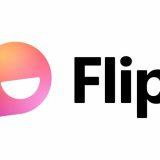It is daylight, or it is darkness. The sky tells it like it is, if you’re listening with your eyes. You act accordingly, without thinking about it.
Patterns discerned in gestures and words are called rituals, and sequence matters. It’s easy to think that ritual is all about performance or religion, until you’re repeating something to no one, not even god. Don’t bother separating the symbolic from the functional when it comes to ritual. Brush your teeth, comb your hair, change your clothes. The beginning is the beginning; don’t skip the greeting. Right now could be the start of something, the once upon a time you’ll look back on.
Consider tools: sundial, hourglass, candle, pendulum, watch.
If time is an arrow, it’ll hit its mark. But one thing about time is that its passage allows things to get messy. We call this entropy, and it was invented to measure the chaos of an isolated system. The house needs tidying. Lawns fill with weeds after the rain. Thoughts in the head get jumbled. Once you’re worked up, it’s hard to settle down.
Still, time seems to know where it’s going, and there’s a then coming […]
Chronology is sequence, and if time is anything more than chronology, then if precedes then. You’re looking for causes that suffice for meaning because meaning, not duration, is what life’s supposed to be about. You’re looking for what the effects of this moment might be. You find chickens and eggs in the fridge, and you make them into memories of breakfast and dinner. Remorse and hope reside here, when time offers some daily sustenance.
~Excerpt from “How to Track Time” by Anna Leahy
There’s a ‘Then’ Coming Preparing for Spring
December 14, 2020
Right now, with the first vaccines being distributed in California, I am focused on the then of a world without fear of COVID contagion, a then with a readily-available vaccine, and a then when I am able to be on campus with all of you again. Those thoughts bring hope as I am closing out Fall semester and assembling my Spring course materials and activities. And I do find myself more excited about this coming Spring than usual, perhaps because last spring was interrupted by so many changes beyond our control.
One teaching strategy I plan to adopt in Spring is to use an annotation tool, Hypothesis, for encouraging conversations around the academic articles that I assign to my students. We’ve recently integrated this tool with Canvas to allow for “Hypothesis assignments.” I intend to replace my typical reading quizzes with these Hypothesis assignments, which I hope will encourage students to discuss the course readings prior to our class meetings. I suspect that my students might prefer to participate in a discussion about the readings rather than take a quiz, and it is my hope that this will encourage engagement with the content rather than adding any additional testing anxiety.
Another teaching strategy that I used this past semester that I will continue for spring, is grading anonymously through Canvas. Doing so has reduced any unintended bias in my grading.
I’m curious what strategies or plans you have for Spring? I’d love to hear about them if you would like to share, so please feel free to drop me a line via MSTeams or email.
Here’s a list of links that you might find helpful as you prepare for your Spring semester:
- Reimagining Education: Race and Purpose in Higher Education with Tressie McMillan Cottom
- HyFlex resources for Chapman faculty
- ETS/IETL Pedagogical Trainings and Workshops Sign Up Page
- Some quick thoughts on increasing instructor presence in the remote classroom
- How to Outsmart your Own Implicit Bias
Implicit bias and how it effects us:
PS: For those of you who read all the way to the end of this article, if you email me (remy@chapman.edu) an intention you have for Spring semester or the name of an ETS/IETL workshop that you plan to attend, I will select from those who reply, one winner of James Lang’s latest book, Distracted: Why Students Can’t Focus and What You Can Do About It.


